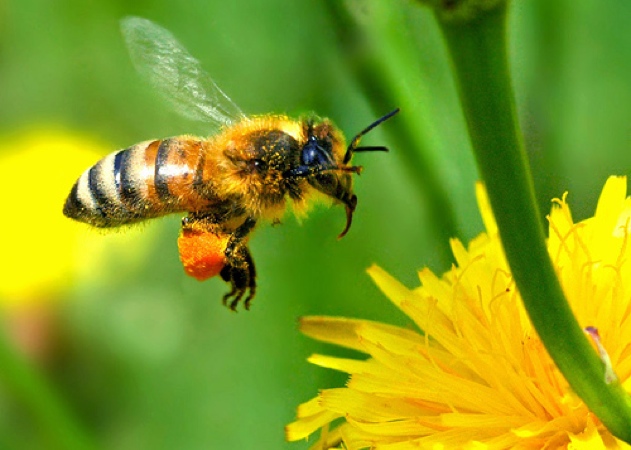
Bee losses in the U.S. aren’t as high this year, but still worrisome: Center for Food Safety
Food in Canada
Food Trends Processing Fruit & Vegetables Health & Wellness Specialty Foods carousel ticker US Department of AgricultureThere’s no way to tell why honey bee colonies did better this past winter, but losses, say experts, are still too high and not sustainable

Washington, D.C. – Results from a survey released this week have found that the U.S. hasn’t lost as many honey bee colonies this past winter as it did in the winter of 2012-2013.
But beekeepers say losses are still too high and not sustainable, reports the U.S. Department of Agriculture (USDA).
According to the survey (conducted by the USDA and the University of Maryland Bee Informed Partnership), total losses of managed honey bee colonies from all causes were 23.2 per cent nationwide. That number if above the 18.9 per cent level of loss that beekeepers says is acceptable for their economic sustainability, but is a huge improvement compared to the 30.5 per cent loss reported for the winter of 2012-2013. And compared to the eight-year average loss of 29.6 per cent.
The Washington, D.C.-based Center for Food Safety says the report is encouraging but there’s more to the results than numbers.
“The reality is that the vast majority of honey bee colonies across the country are still suffering above-average winter losses and unusually high losses in the spring and summer seasons. Year round, beekeepers are fighting an uphill battle to keep their hives alive and viable,” says Larissa Walker, who spearheads the Center for Food Safety’s pollinator campaign.
The Center for Food Safety adds that these latest figures represent only 21 per cent of the U.S.’s honey bee colonies, and are potentially inflated by the recent spike in urban beekeeping, which is not reflective of problems faced by commercial beekeepers depended on by the agricultural community.
The Center for Food Safety is calling on the U.S. to suspend the use of pesticides such as neonicotinoids, a pesticide many believe are responsible for bee colony deaths.
The USDA explains that more than three-fourths of the world’s flowering plants rely on pollinators, such as bees, to reproduce, meaning pollinators help produce one out of every three bites of food consumers eat.
“Pollinators, such as bees, birds and other insects are essential partners for farmers and ranchers and help produce much of our food supply. Healthy pollinator populations are critical to the continued economic well-being of agricultural producers,” says U.S. Agriculture Secretary Tom Vilsack.
“While we’re glad to see improvement this year, losses are still too high and there is still much more work to be done to stabilize bee populations.”
The USDA adds that there’s no way to tell why the bees did better this year.
“Yearly fluctuations in the rate of losses like these only demonstrate how complicated the whole issue of honey bee health has become, with factors such as viruses and other pathogens, parasites like varroa mites, problems of nutrition from lack of diversity in pollen sources, and even sublethal effects of pesticides combining to weaken and kill bee colonies,” explains Jeff Pettis, co-author of the survey and research leader of the Agricultural Research Service (ARS) Bee Research Laboratory in Beltsville, Md. ARS is USDA’s chief intramural scientific research agency.
The Center for Food Safety says beekeepers are taking extensive and expensive measures to ensure the losses aren’t even higher than they are, exhausting all resources to keep their hives alive.
The Center for Food Safety has been heavily involved in the effort to protect pollinators, and the food supply, from harmful chemicals. In March 2013, CFS filed a lawsuit on behalf of several beekeepers and public interest groups against the U.S. Environmental Protection Agency, seeking suspension of two highly toxic neonicotinoids and charging that agency’s overall handling of the chemicals has been flawed and unlawful. CFS has also pushed for stronger action from Congress through the introduction of the Saving America’s Pollinators Act.
A complete analysis of the bee survey data will be published later this year. For a summary of the analysis, click here.
Print this page